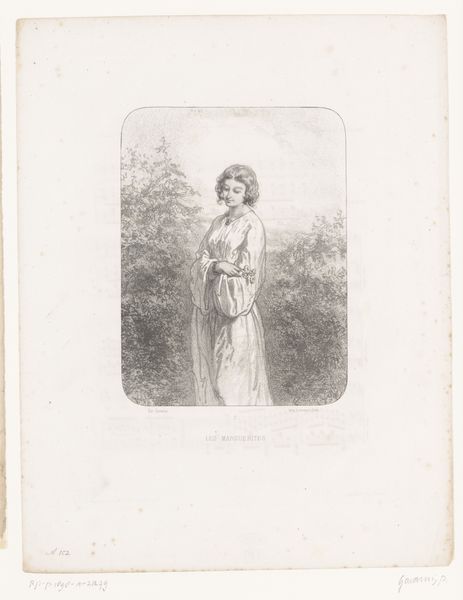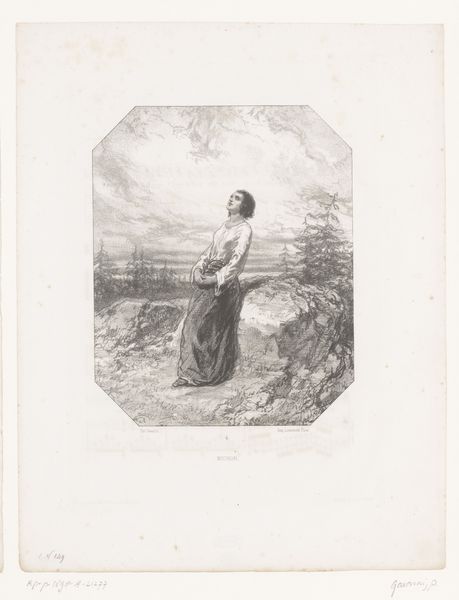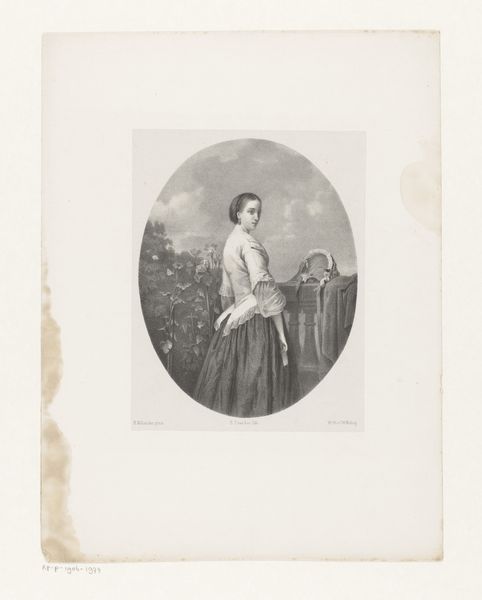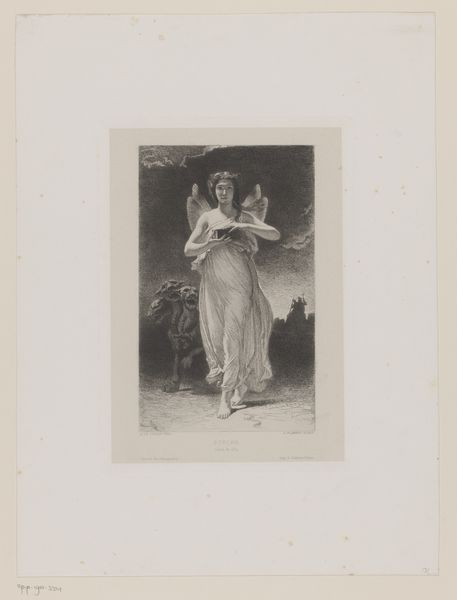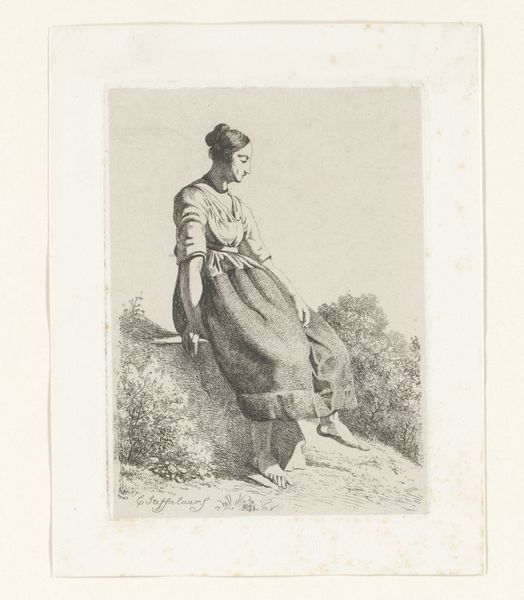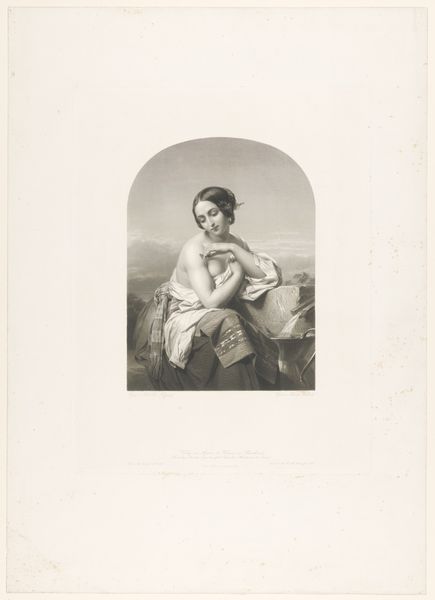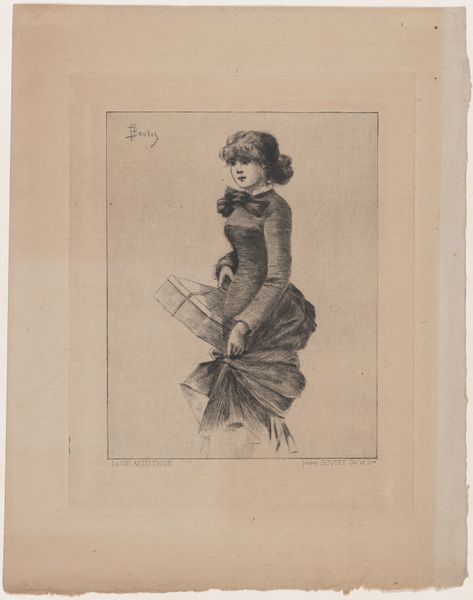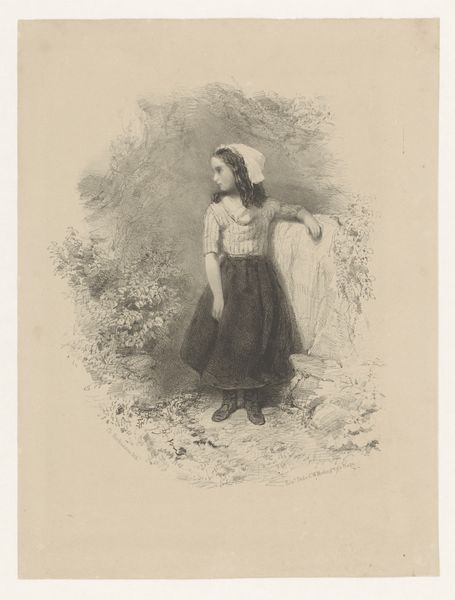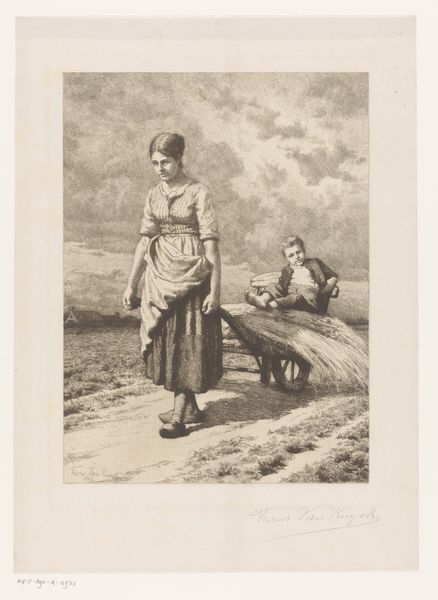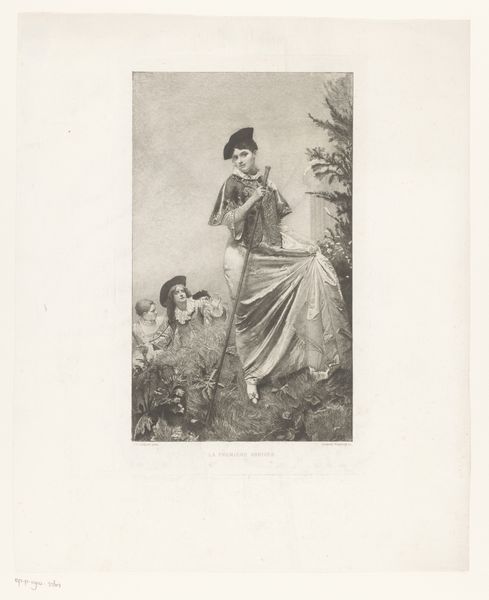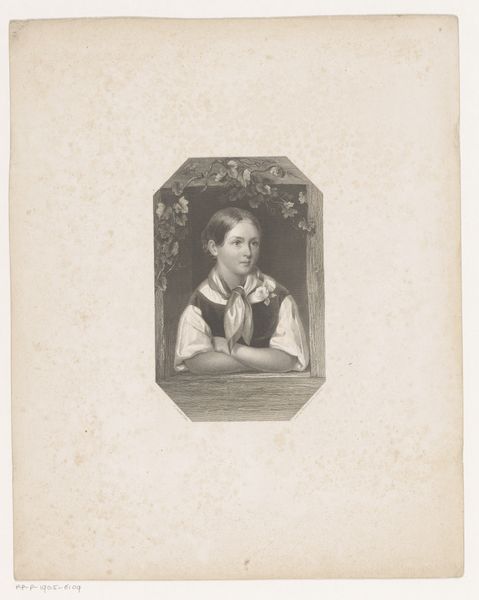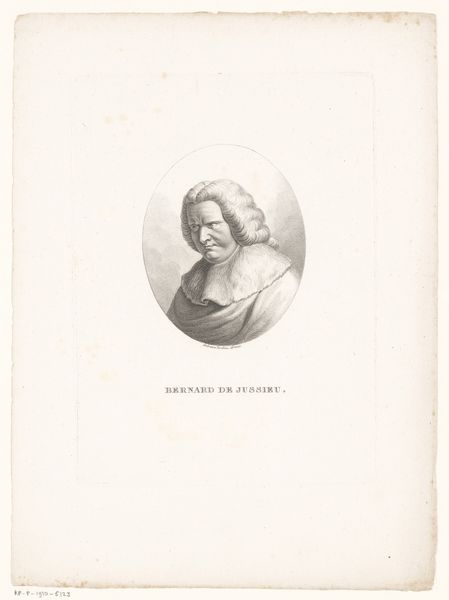
Dimensions: height 341 mm, width 273 mm
Copyright: Rijks Museum: Open Domain
Curator: We're now observing "Jonge vrouw in paardrijkleding met zweep," or "Young Woman in Riding Clothes with Whip" by Paul Gavarni, created around 1854. Editor: It’s immediately striking—melancholy almost. The figure is offset, gazing into a landscape. The delicate, etched lines evoke a certain softness. Curator: Absolutely. The lithographic print on paper, Gavarni uses crosshatching to establish value, defining her fashionable equestrian attire. Note the details of the tailored jacket and the wisps of hair escaping her coiffure. It’s a careful study of form and light. Editor: What is the paper source and method of mass production? Were these available to working-class people, or only the rising bourgeoisie? The social position of the sitter also seems highly relevant. Is her status expressed via the luxurious materials used in riding? Who were the ateliers producing this kind of garment? Curator: An excellent point. Contextually, Gavarni captured the elegance of Parisian society. The print, part of the Romantic movement, showcases a kind of idealized, perhaps even sentimental, vision of womanhood. Editor: Sentimentality is such a tricky thing here! What kind of labour and materials were required to manufacture her outfit? Where did Gavarni create the drawings? What kind of pen and ink was needed for this printing? Curator: The medium allows for dissemination. And it emphasizes line and tonal gradation through layering. Observe her contrapposto stance, adding to the image’s dynamic balance despite her apparent stillness. It's quite a compositional achievement. Editor: Yet it’s also about more than compositional choices. Look at the tactile presence of the ink, how it lies on the surface, becoming part of the object, and how we project our anxieties onto its production and consumption! Curator: You're right; Gavarni encapsulates fleeting moments. Its beauty lies within the visual order created with Romanticism's expressive possibilities, don't you think? Editor: Precisely—though let's acknowledge those materials. The print itself becomes an artefact of exchange, transforming artistic ideas into objects for cultural discussion. Curator: Well said. Gavarni has managed to capture something enduring about human emotion and experience by imbuing this image with Romantic sentimentality. Editor: An object infused with Romanticism. We are not looking merely at sentimental lines. I will take these objects and see what labor built to build our perception.
Comments
No comments
Be the first to comment and join the conversation on the ultimate creative platform.
